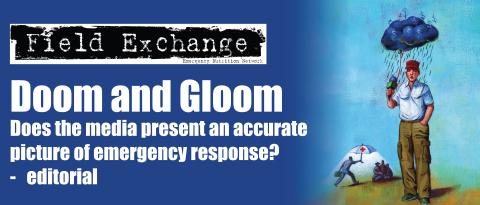Incidence and duration of severe wasting in two African populations
Summary of review1

A child being measured during the health survey in Niakhar
A recent literature review did not reveal any publication with proper estimates of incidence and duration of episodes of severe wasting. A recent study has therefore set out to compare two situations of endemic malnutrition among under 5 year old children and to estimate the incidence, duration and case fatality of severe wasting episodes.
The study involved a secondary analysis of longitudinal studies, conducted several years ago, which allowed incidence and duration to be calculated from transition rates. The first site was Niakhar in Senegal, an area under demographic surveillance, where researchers followed a cohort of children in 1983-5. The second site was Bwamanda in the Democratic Republic of Congo (DRC), where a cohort of children was followed from 1989 to 1992. Both studies enrolled about 5000 children, who were followed by routine visits (every 6 months) and systematic anthropometric assessment (every 3 months).
Main findings
Niakhar had less stunting, more wasting and higher death rates than Bwamanda. Differences in cause-specific mortality included more diarrhoeal diseases, more marasmus, but less malaria and severe anaemia in Niakhar. Severe wasting had a higher incidence, a higher prevalence and a more marked age profile in Niakhar. However, despite the differences, the estimated mean durations of episodes of severe wasting, calculated by multi-state life table, were similar in the two studies (7.5 months). Noteworthy were the differences in the prevalence and incidence of severe wasting depending on the anthropometric indicator (weight-for-height Z-score (WHZ) ?3.0 or mid upper-arm circumference (MUAC) < 110mm) and the reference system (National Centre for Health Statistics 1977, Centres for Disease Control and Prevention 2000 or Multicentre Growth Reference Study 2006). Severe wasting in Niakhar and Bwamanda using WHZ was 3.2% and 2.9%, while using MUAC, the prevalence was 1.7% and 4.6% respectively.
Main findings Niakhar had less stunting, more wasting and higher death rates than Bwamanda. Differences in cause-specific mortality included more diarrhoeal diseases, more marasmus, but less malaria and severe anaemia in Niakhar. Severe wasting had a higher incidence, a higher prevalence and a more marked age profile in Niakhar. However, despite the differences, the estimated mean durations of episodes of severe wasting, calculated by multi-state life table, were similar in the two studies (7.5 months). Noteworthy were the differences in the prevalence and incidence of severe wasting depending on the anthropometric indicator (weight-for-height Z-score (WHZ) ?3.0 or mid upper-arm circumference (MUAC) < 110mm) and the reference system (National Centre for Health Statistics 1977, Centres for Disease Control and Prevention 2000 or Multicentre Growth Reference Study 2006). Severe wasting in Niakhar and Bwamanda using WHZ was 3.2% and 2.9%, while using MUAC, the prevalence was 1.7% and 4.6% respectively.
Genetic factors seemed also to play a role in the comparison. Sahelians of West Africa are usually taller than Congolese Bantus and in particular tend to have a low sitting-height to standing-height ratio (Cormic index). Their body shape therefore tends to underestimate stunting and overestimate wasting when compared to other indicators of muscular mass.
Finally, the authors consider that since these data were collected, HIV/AIDS has emerged, leading to an increase in the prevalence of severe wasting in many African countries. This relatively new disease is likely to change some of the parameters used in the present study.
The authors overall conclusions was that severe wasting appeared as one of the leading causes of death among underfives. It had a high incidence (about 2% per child-semester), long duration of episodes and high case fatality rates
1Garenne. M et al (2009). Incidence and duration of severe wasting in two African populations. Public Health Nutrition, vol 12 (11), pp 1974-1982
Imported from FEX website


